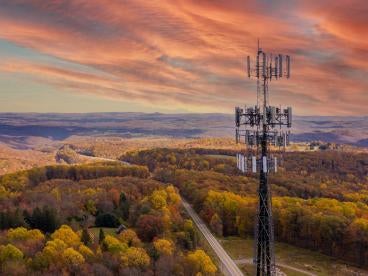With the start of a new year came renewed activity in the broadband space at the state and federal levels.
As expected, there were developments related to the Broadband Equity, Access, and Deployment (“BEAD”) program, the federal broadband funding program administered by the National Telecommunications and Information Administration (“NTIA”). In our previous blog post in November 2023, we reported that only 12 states had submitted their Volume I Initial Proposals to NTIA for approval and that NTIA had only approved those of Virginia and Louisiana. Only Virginia, Louisiana, and Nevada had submitted their Volume II Initial Proposals to NTIA for approval. Much has changed since then.
- Every state and territory has submitted both volumes of their Initial Proposal to NTIA for approval.
- NTIA has approved Volume I of the Initial Proposal of Louisiana, Virginia, Delaware, Kansas, Colorado, and Montana. All other Volume I submissions remain under NTIA review.
- NTIA has approved Volume II of Louisiana’s Initial Proposal. All other Volume II submissions remain under NTIA review.
- Louisiana and Virginia have closed their BEAD challenge windows.
- The BEAD challenge process is ongoing in Delaware, Kansas, Colorado, and Montana.
The main takeaway from the current state of affairs is that BEAD program implementation is effectively on a holding pattern in most of the United States—and will remain that way until NTIA approves more Volume I Initial Proposals. Assuming no additional extensions to the deadlines set forth in the NOFO, BEAD subgrantee selections are unlikely to occur in most of the United States until 2025. But BEAD subgrantee applications are still likely to be due in mid-2024, even under this projected timeline. That means that providers, municipalities, and local governments still thinking about how to benefit from BEAD funding should still expect to be very busy in 2024 and should already be planning how to maximize BEAD funding as part of their broadband deployment plans. As a reminder, states will have 12 months from NTIA’s approval of their Initial Proposals to conduct the procurement process and submit their Final Proposals to NTIA.
Looking Beyond BEAD
The recent emphasis on the BEAD program has overshadowed other developments and opportunities in the broadband infrastructure sector. As our previous blog post explained, public-private partnerships in the broadband space do not depend on BEAD funding. The BEAD program unquestionably provides a unique window for certain P3 and municipal broadband projects that may need subsidies like those offered by the BEAD program to be financially viable. But the BEAD program will not be the best solution for every community or the best fit for every broadband infrastructure project, particularly among those considering public-private partnerships. A few considerations:
- BEAD is not designed to promote competition. As a program modeled in universal service principles, its goal is to ensure service expansion by at least one provider in every locality—not to promote competition among private providers. But for many cities and counties, the challenge (or the objective) is not merely to ensure service by a single provider but to promote competition within their jurisdictions by attracting several providers. The BEAD program often will not be the best mechanism to achieve these goals, particularly in areas with heavy concentrations of served (and therefore ineligible) areas under BEAD’s formula.
- BEAD requires building an entire network to serve customers. The program is flexible enough to cover building conduit and middle-mile networks, but only where they are part of a broader project to build a comprehensive network that delivers service to customers. Many cities and counties looking at building conduit networks or middle-mile networks as a tool to attract greater private investment may find the BEAD program a challenging fit.
- Existing state laws limiting municipal broadband and other public-private partnerships in the broadband space are not preempted by BEAD. NTIA officials have stated that they have not seen an increase in state laws restricting municipal broadband projects or broadband P3s. But existing state laws restricting these projects have yet to be rolled back. Cities and local governments seriously considering public-private partnerships as a vehicle to participate in the BEAD program will find it challenging and risky to do so in states with these restrictions.
- Other sources of funding are available. Many states are using federal funds from the Capital Projects Fund (CPF) to fund publicly owned middle-mile projects and partnerships for last-mile deployments. The Treasury Department has already allotted $9 billion under the CPF to expand broadband access. New York recently announced it would allocate $228 million in CPF funds to a grant program to support municipal broadband projects and broadband P3s. In other states, community and city-wide are leveraging fiber deployment by publicly owned electric utilities and private financing to develop broadband P3s that offer broadband service to end-users in competition with incumbent cable or telecom providers.
None of this is to suggest that the BEAD program should be disregarded. To the contrary, cities and local governments should be seriously looking at the historical opportunity the BEAD program presents. But a critical first step in that effort is to define needs and policy objectives clearly and make a realistic assessment of the historical challenges to broadband deployment, which inevitably vary from jurisdiction to jurisdiction. That means that there is no single solution that works for every jurisdiction. It also means that, with so many sources of private, state, and federal funding sources available, policy objectives and a pragmatic assessment of local challenges and conditions should guide the decision of what funding source to pursue, not the other way around.




 i
i


